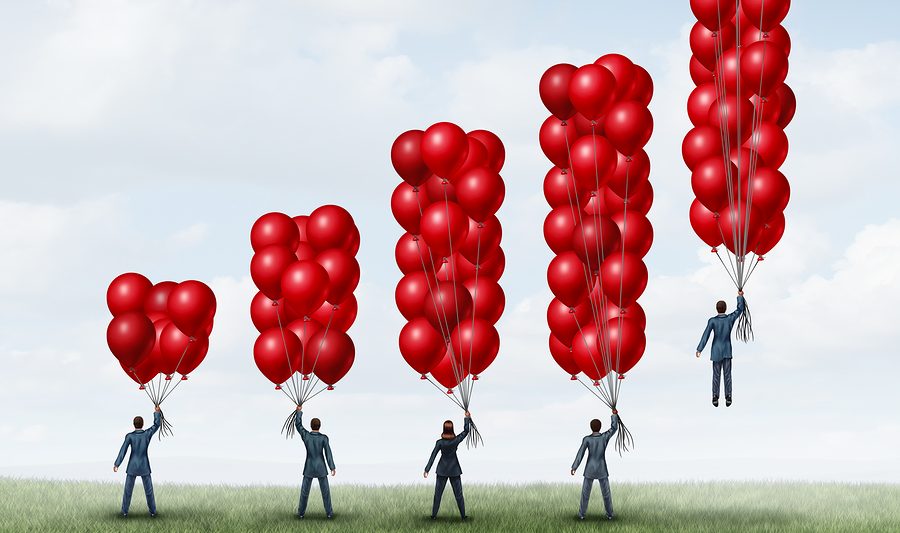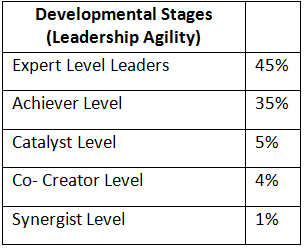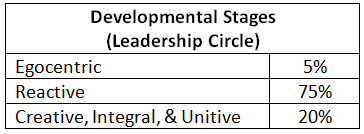Leadership development isn’t mysterious. It follows progressive stages. In my previous posts, I introduced you to developmental theory for adults and how developmental stages are being applied to leaders. A better understanding of how leaders grow can help organizations and coaches approach leadership training with an expanded perspective.
The theory of stages for leadership development indicates that if we try to grow leaders’ inner game, rather than outer competencies, leaders increase their capacity to handle more complexity and thus lead more effectively.
In my last post, I described five levels of leadership, summarizing the leading experts’ classifications. The first two levels (Egocentric, Reactive) are based on leaders’ ability to hold themselves out as heroes, providing answers and solutions. But operating with this mindset means you’re intent on meeting your own needs, including wanting to be the recognized expert, achieving results and being admired.
When you can transition to the third stage (Creative, Self-Authoring, Catalyst), you no longer have an externally based self-worth. At this point, you aim for a higher purpose, are willing to share power, and can let go of previous assumptions and any hero complex.
Great leadership and business performance emerge at the “post-heroic” stages. In the top 10% of the highest-performing businesses (out of a half million surveyed), the average leadership effectiveness score falls into the 80th percentile, research shows. These leaders score better than 80% of their peers.
Surging Past the Norm
Most adults fail to progress beyond what’s normative: the Socialized or Reactive mind. Only 10% of adults progress beyond the Achiever level, according to the Leadership Agility authors, William B. Joiner and Stephen A. Josephs:
Viewed from The Leadership Circle research, only 20% progress beyond the Reactive stage, which points to the urgent need for leadership-development programs to address far more than skills and outer competencies.
Why All of This Matters
At higher levels of development, leaders can detect nuances, deal with paradoxes and respond with agility in lieu of being reactive. Today’s volatile business environment demands higher levels of consciousness.
Developmental-stage theories are more than descriptive tools. The stages chart a path that can help leaders develop more complex forms of mind. The framework also helps match a leader’s mindset at any given time with that required by a particular task.
As they progress from one level to the next, leaders expand their strengths and abilities. They can grow into the next developmental stage, recognizing there will be a learning curve and inherent challenges.
“Leaders with different forms of mind will have different capacities to take the perspectives of others, to be self-directed, to generate and modify systems, to manage conflicts, and to deal with paradox.” ~ Jennifer Garvey Berger Changing on the Job: Developing Leaders for a Complex World, Stanford Business Books, 2011
As a leader, your ability to make sense of greater levels of complexity continues throughout the lifespan and has a significant impact on both leadership and development. You acquire special competencies and skills with experience, as well as a mind that sharpens over time. Only when leadership development programs take developmental stages into account will you grow into a better leader.
What do you think about these ideas? Do they resonate for you and what you’ve observed as the leaders in your organization have matured? I’d love to hear from you. I can be reached here or on LinkedIn.

Did You Enjoy This Article?
Join thousands of other smart business owners like yourself & get our Proffittable Times newsletter.
It's filled with actionable content you can apply immediately.
Sign up now to get started!
– Coach Nancy












